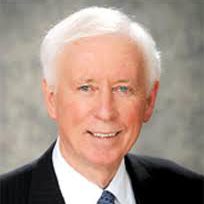Enhancing Communication Around Influenza Vaccination
I am here at the CDC in Atlanta, USA with 97 other attendees representing 37 countries, for the WHO-CDC sponsored “Workshop on Enhancing Communication Around Influenza Vaccination”. Daniel Miller, MD, Director International Influenza Unit, US-HHS, opened the conference yesterday saying: “The highest risk of a world wide pandemic is influenza.”. He pointed out that this is related to the fact that the influenza virus is easily spread from person to person and mutates frequently, making annual vaccine production to prevent the disease challenging.
Dr. Miller went on to describe influenza as a disease that affects 3 to 5 million persons yearly worldwide. The disease varies from mild symptoms to those requiring hospitalization. It is associated with 300,000 to 500,000 deaths. Vaccines are safe and effective and the best way to decrease the risk of getting seasonal flu and the risk of spreading the virus.
The workshop is the sixth in a series intended to serve and influence the ongoing implementation of the WHO Global Action Plan (GAP) for Influenza Vaccines. This is a strategy to reduce the global shortage of influenza vaccines for seasonal epidemics and pandemic influenza in all countries of the world through three major approaches. They are to increase seasonal vaccine use, increase vaccine production capacity and do research and development to improve current vaccines.
The goal of this workshop on communication is improved planning and application of effective communication practices to reach all audiences and foster collaboration between private and public sector stakeholders; and collective learning and relationship building between different stakeholders to strengthen national and regional communication capacity related to seasonal flu vaccination and pandemic influenza response.
According to Dr. Miller, seasonal flu and outbreaks of influenza are accompanied by uncertainty, rumors, concerns about the virus, worries about availability of vaccines, a sense of urgency, issues of trust in authorities and different perspectives. Complicating that mix are myths and untruths that surround influenza and the vaccine. These include claims that the vaccine causes autism and narcolepsy – claims for which there is no scientific evidence.
The challenge for communications around this subject is to craft messages, which are scientifically accurate and inform while reflecting an understanding of the human ethos involved in such issues. All of this, I believe is an ongoing challenge for the medical community, not only related to influenza but to medicine in general. What is sought from medicine by not only the public but most of us is definitive answers with certainty – is it yes, or is it no? Science is about probabilities, not certainties. In science there is not a yes or no. Modern communication, particularly in the media is about sound bites – about short, simple explanations. Marrying the two is our challenge and opportunity as a profession.

